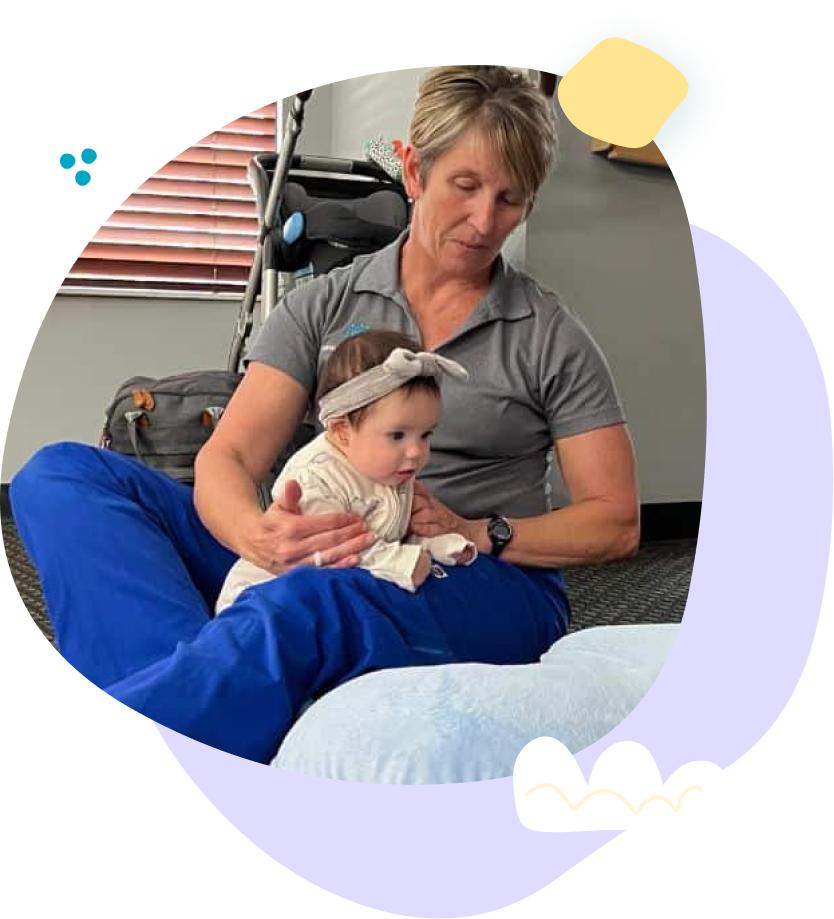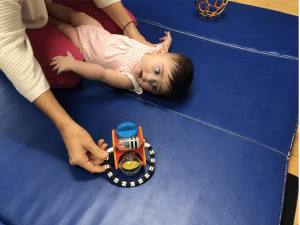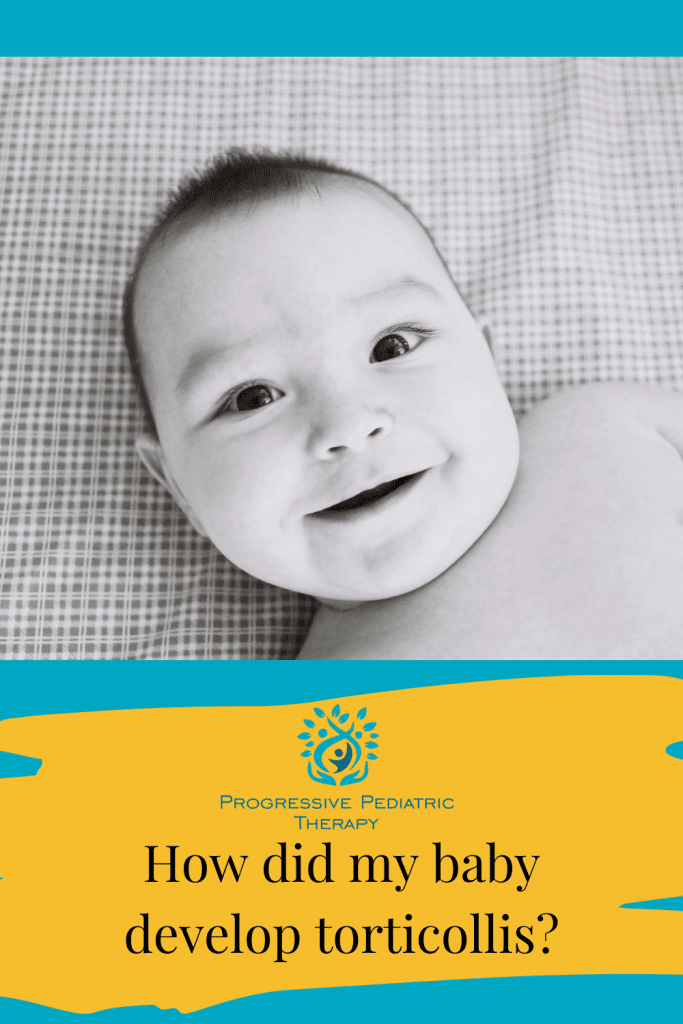Your Clinic
SET A LOCATION
Your Clinic
SET A LOCATION
Comprehensive
Physical and
Occupational Therapy Evaluation and Treatment for Torticollis.
Torticollis is very common in newborns and easy to treat if caught early on.
Children who experience decreased neck range of motion and unable to hold head in midline.
Children with muscular fibrosis or congenital spine abnormalities.
Facial or head asymmetries including “flat head".

Torticollis is a condition defined by an abnormal, asymmetrical head or neck position. A multitude of conditions may lead to the development of torticollis including: muscular fibrosis, congenital spine abnormalities, decreased blood supply to the muscle, difficulty during delivery, and positioning of the baby inside the uterus during the last few weeks of pregnancy. In addition, infants often develop torticollis as a result of the amount of time spent lying on their back during the day in car seats, swings, bouncers, strollers, and on play mats. They typically have a higher risk for flat head syndrome as well.
It is extremely important to have torticollis treated to prevent a permanent shortening of the involved muscles. In addition, therapy can help avoid needed surgery and decreases head and neck pain. When discovered and stretches are implemented early, 80% of children recover completely with no long term effects (www.orthoseek.com).
PPT4Kids provides specialized tools to address neck muscle tightness and head positioning challenges. Our interventions help improve head and neck mobility, symmetry, and functional positioning for feeding, play, and development.

Attend our clinics for expert orthotics evaluations and fittings, designed to improve mobility and ensure optimal comfort tailored to your needs. Children at PPT can attend monthly clinics for custom wheelchairs or orthotics, designed to enhance mobility and ensure proper postural alignment. These specialized devices support proper body alignment and improve functional mobility.
PPT uses cutting-edge tools like Galileo whole-body vibration platforms and Mano dumbbells to enhance therapy outcomes. Therapeutic vibration helps to optimize neuroplasticity, promote motor learning and decrease the complications of many childhood conditions that limit movement, sensory processing skills, and learning. A unique therapeutic intervention used to decrease muscle tightness, change habitual patterns of movement in a single joint, or improve range of motion.
Your baby may prefer to turn their head to one side only.
Your baby may hold their head tilted to one side with one ear closer to their shoulder.
There may be flattening or bulging on the back or the side of the head, and changes in facial shape and facial features.
Your baby may prefer to breastfeed on one side only.
When your baby’s head is moved or they are put on their tummy, they become fussy and irritated.

A Physical Therapist (PTs) will perform an evaluation to assess the child’s passive range of motion, active range of motion, muscle tightness, muscle strength, and gross motor skills. She also checks for other conditions that can occur with children who present with torticollis such as plagiocephaly (abnormal head shape), hip dysplasia (misalignment of the hip joint), and spine problems. The therapist then discusses these results with the family and makes appropriate recommendations for physical therapy treatment, if indicated.
The physical therapy (PT) treatment may include stretching and strengthening of the child’s neck muscles. It will typically include active and passive stretching of the neck and shoulder muscles as well as positioning and handling techniques to correct the child’s posture. The therapist also instructs the family in a stretching and positioning program designed specifically to the child’s needs and may also use other types of assistive technology such as a TOT collar or kinesiotaping. The parents then perform the home exercises daily with the child and follow-up as recommended by the physical therapist to ensure attainment of all physical therapy goals.
Improve child’s ability to turn head between right and left sides.
Improve child’s ability to bring chin to chest.
Improve child’s ability to orient their head to midline against gravity.
Encourage child to lift head against gravity while lying on stomach.
Achieve normal weight bearing and shifting over upper extremities.
Encourage symmetrical use of upper extremities.
Allow child to experience proper weight shifting during developmental activities including sitting, rolling, creeping, and walking.



We empower children, families, and the community to learn, grow, and celebrate every child's unique abilities.
Quick Links
Contact Details
Phone: 561-376-2573 | 561-918-0190
Fax: 561-218-4939
VIP Concierge: 561-717-1764
Clinic Locations
All Rights Reserved | Progressive Pediatric Therapy, Inc. | Privacy Policy | Terms of Service
Site by Spearlance